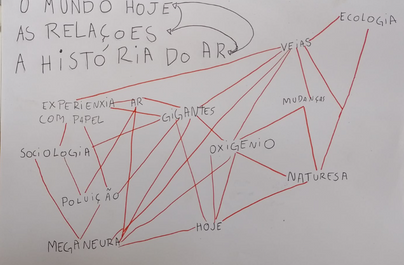ENVISIONING A WORLD WITH UNIVERSAL FUTURES EDUCATION
- APF Community
- Aug 29, 2024
- 7 min read
Question: What if every child in the world were taught future studies in their schools – what would be the impact of that on our world?
By Rosa Alegria

In today’s rapidly evolving world, understanding and preparing for the future is not just beneficial but essential. Imagine if children and youth around the globe were taught future studies as a fundamental part of their education. Imagine the impact.
This transformative idea poses the potential to significantly alter not only the educational landscape but also the future of global societies and economies. The incorporation of futures studies into global education systems could cultivate a generation uniquely equipped to tackle and shape the world's forthcoming challenges and opportunities.
IF WE LEARN ABOUT THE PAST, WHY CAN’T WE LEARN ABOUT THE FUTURE?
I heard this question ten years ago from futurist Peter Bishop, founder of the Teach the Future movement; it has been the ignition point for the adoption of futures literacy in primary and secondary schools around the world, including Brazil, my country.
Experience has shown that at a time when we are looking for models that make sense to the student, integrating the future into teaching and learning processes is intellectually stimulating not only for students but also (maybe mainly) for teachers.
The recurring (and endless) rhetoric has been about the future of education, new technologies, new teaching methods, the elimination of jobs and the creation of new ones. There is little talk about the future in education, a grammatical subtlety that could transform the educational system: replacing the preposition “of” with “in.”
Faced with the post-normality living with growing complexity, chaos and contradiction that weaken society in its creative power, nothing is more important for the education ecosystem than exploring the future as a powerful organizing concept for change in school activities. In 1974, Alvin Toffler pointed to the importance of teaching and learning about the future and hinted at the gap between obsolete education and the arrival of emerging models (Learning for Tomorrow).
Integrating the future into teaching and learning processes is intellectually stimulating for both those who teach and those who learn, as it opens up thinking and adds useful, imaginative value to the construction of responses to change.
The use of concepts and techniques that allow us to go beyond the probable helps to dissolve fear, which strengthens creative power. This is valuable in preparing for life, as it makes young people co-responsible for the world. It helps them to identify their purpose in all dimensions in the face of challenges that can already be seen ahead: new teaching-learning models, the relationship between humans and machines, professions that don't yet exist and that will be needed, innovations in an intergenerational world, dichotomies between democracy and surveillance, post-pandemic lifestyles, the rise of new consumer cultures, changing family arrangements, access to natural goods with climate change, augmented intelligence technologies, production systems in new economies, and income models in increasingly unequal societies. These are just some of the new realities we will see in the future. So, why not teach the new generation, our next leaders and futures shapers, to get ahead of them?
We are increasingly exposed to the need to look ahead. This new outlook requires a broadening of time horizons in educational systems. As a first strategy, we need to correct what the futurist-educator Noel Gough calls temporal asymmetry: the overemphasis on the past and present to the detriment of the future, which reveals the natural human resistance to dealing with the unknown. This resistance often turns into fear, phobia and anxiety, most notably in the emotions of teenagers facing a cloudy future.
AN ELEMENTARY SCHOOL THAT INCLUDED THE FUTURE IN ITS CURRICULUM
Estilo de Aprender (Style of Learning School) is a primary school based in São Paulo, Brazil, which has been integrating the future into its core curriculum for 6 to 10-year-old students over the past two years.
Marcelle Berton, the school's founder, explains, “In the same way that we work on the SDGs, the climate emergency and issues of identity, we understand that presenting the future to our children would be another way of inserting them into the current context. Understanding that it is possible to influence the future and anticipate it brings security and hope.”
Children are endowed with a high imaginative capacity. However, when they become adults, they tend to experience social restrictions that discourage the spontaneity necessary for a strong imagination. For this reason, it is essential that primary and high schools create open spaces for children and teenagers to freely imagine new realities, because it is through this freedom that they can develop their critical thinking, problem-solving and innovation skills, preparing them to face the challenges of the future creatively and confidently.
Aline Alegria, Estilo de Aprender School’s futures literacy teacher, shares her observations: “What I have noticed so far is the infinite capacity of the child to create, imagine and celebrate life, at the same time as the visions shared by the children about what they imagine about the future are quite dystopian, not very diverse, showing an imagination colonized by the culture of fear and dominated by technology. One of my missions is to introduce children to new ways of relating to the future, revealing to them the power of imagination in building the futures they want and how they can make sense to their present.”
In this expanding and expressing imagination process the application of art has been fundamental to making sense of the future, because it is through art that the unknown manifests itself more deeply in children.
According to Aline Alegria´s findings, the combination of “hand-heart-mind” activities to make the future tangible, has nurtured in children a re-enchantment with life, inspiring the creation (design) of new solutions to the fears they face through awareness that frees and expands their imagination. The activity of thinking and creating desirable futures in an active and diverse way has been surprising. It's a portal that opens up to new worlds.
POTENTIAL SHIFTS IN SOCIETY FROM UNIVERSAL FUTURES EDUCATION
Introducing futures into the school curriculum could have far-reaching consequences for society that is in urgent need of creative and regenerative paths to solve a polycrisis historical moment.
Decolonizing Futures and Reenchanting Imagination: Through the search for the unknown, ideas come up and regenerate social vitality along the path of what has not yet happened and could happen in a positive way. Teaching futures thinking to children and adolescents l make them take their own dreams that they have been unable to dream. A society that favors dystopia over utopia has dramatically atrophied society's imaginative power, and in this context, the new generations are the most sensitive recipients of this culture that colonizes minds with apocalyptic predictions or technological utopias that come from shady interests.
Cultural Shifts by Long-Term View: Widespread education in futures thinking could lead to a cultural shift where long-term thinking becomes the norm. This shift would likely influence public policy, corporate strategies, and individual behaviors towards more sustainable and foresighted practices.
Enhanced Problem-Solving Skills: Students trained in futures thinking would develop enhanced problem-solving abilities, enabling them to handle complex situations that require understanding multiple, often interconnected factors. These skills are vital in addressing global challenges such as climate change, resource management, and sustainable development.
Out-of-the-box-thinking: Futures education encourages out-of-the-box thinking and the exploration of novel solutions. A generation thinking innovatively about the future could lead to breakthroughs in science, technology, and societal structures, driving progress and fostering a culture of creativity and innovation.
Improved Decision Making: Understanding the long-term impacts of actions and policies is crucial for effective governance and corporate management. Students equipped with foresight capabilities could make more informed decisions in their personal, professional, and civic lives, leading to more resilient communities and nations.
Economic Implications: By fostering a generation of forward-thinking innovators and problem solvers, futures education could stimulate new industries and enhance global economic resilience. Young entrepreneurs and workers entering the workforce would bring skills that could lead to new business models and economic opportunities.
Enhanced Global Understanding: Futures education inherently encourages a global perspective by emphasizing interconnectedness and the collective impact of local actions. This understanding could lead to stronger international cooperation on global challenges, promoting peace and collective security.
WHAT IF, BY 2034, HALF OF ALL SCHOOLS IN THE WORLD TAUGHT FUTURES THINKING?
Imagine the global movement Teach the Future, which started in 2014, has catalyzed a global educational revolution where, by 2034, futures thinking became a staple in curricula worldwide.
Imagine classrooms buzzing with students from diverse backgrounds, each engaged in active, visionary discussions about potential technological advances, environmental solutions, and societal transformations. These students, equipped with the tools of foresight, have become powerhouses of disruptive ideas to not only forecast possible outcomes but also critically evaluate and strategize their roles in shaping these futures.
Schools would no longer be places where students passively learn about the world as it is and was; instead, they would become incubators for proactive, informed citizens who are adept at modeling scenarios, anticipating challenges, and innovating solutions that honor sustainability and equity on a global scale.
What if this widespread adoption of futures education across the globe cultivated a new generation that could address the world's most pressing challenges with unprecedented creativity and foresight? By 2034, these students would be entering the workforce, bringing with them a mindset that prioritizes long-term thinking and cross-cultural collaboration. They would be more than workers and leaders; they would be changemakers whose early education in futures thinking empowers them to spearhead sustainable projects, influence policy-making, and steer global economic trends towards more inclusive and sustainable models.
This vision holds the promise of a world where decision-making at all levels is infused with a deep understanding of complex systems, long-term impacts, and the interconnectedness of global communities, potentially leading to a more harmonious and resilient global society.
REFERENCES:
Teach the Future movement www.teachthefuture.org
10 year of activities - Annual Report of Teach the Future Movement https://www.teachthefuture.org/_files/ugd/2622a8_6cc98d9496a94dba8187716c339dae62.pdf?index=true&lang=pt

Rosa Alegria is an international consultant and lecturer. After becoming a grandmother in 2015 (she has now four grandchildren) she started dedicating her foresight skills and knowledge to the new generations. Today, she is on the global team of the Teach the Future movement and represents TTF Brazilian hub in Brazil which has been the most active to date. She serves as the Director of the Brazilian Node of the Millennium Project. Rosa is in the executive board of the WFSF World Futures Studies Federation.
Rosa holds a Bachelor of Arts and Literature at USP University of São Paulo, Graduated in Futures Studies from the University of Houston's Master's Program, Clear Lake, a pioneer in strategic foresight in Brazil since 2000, is among the most recognized female futurists in Latin America. Rosa is a specialist in Sustainability from Schumacher College, England and Global Management from Morehouse College, USA.
To reach Rosa, contact: www.rosaalegria.com.br.














Comments